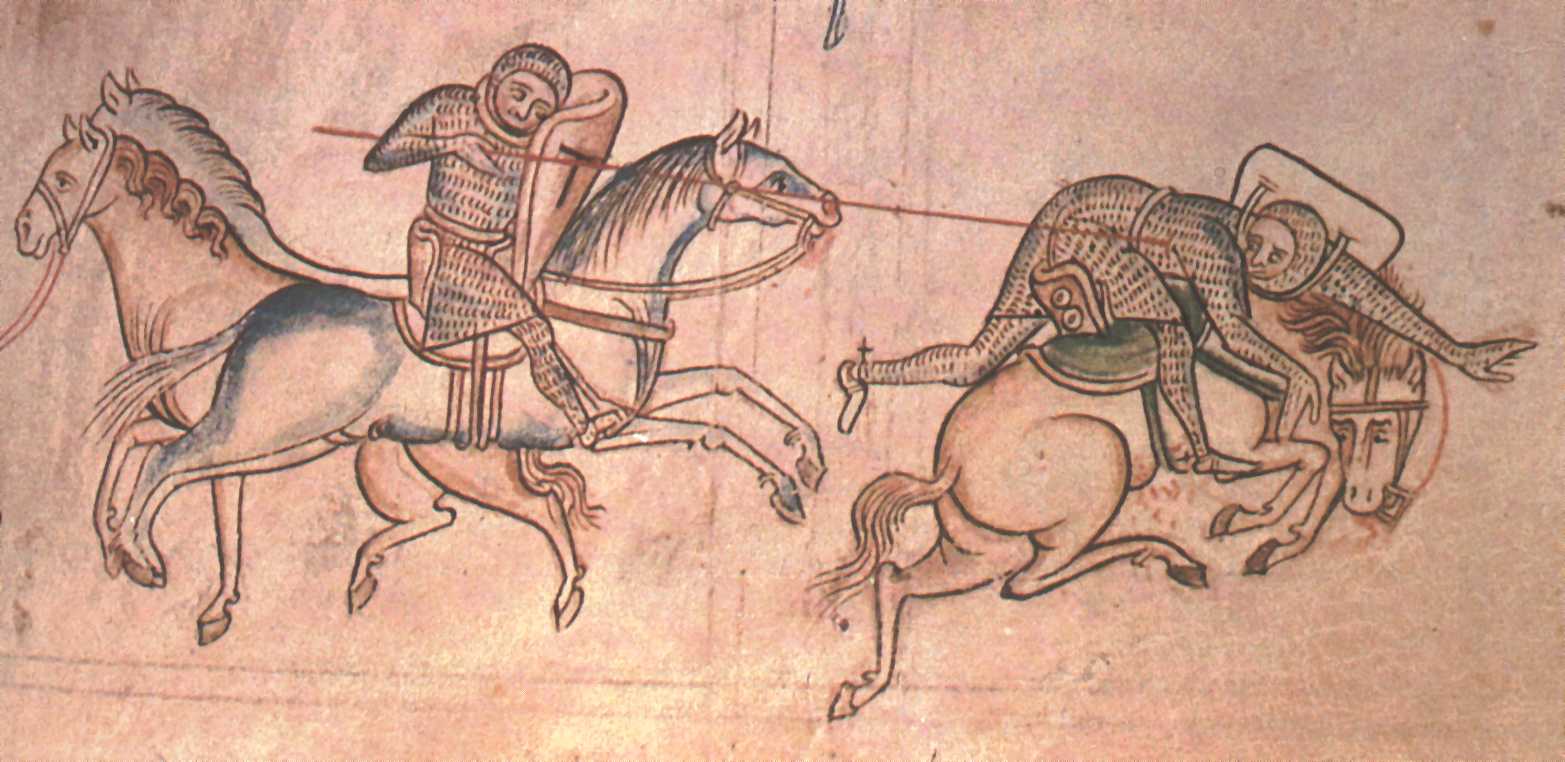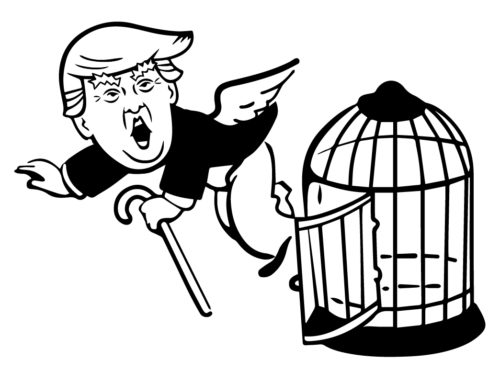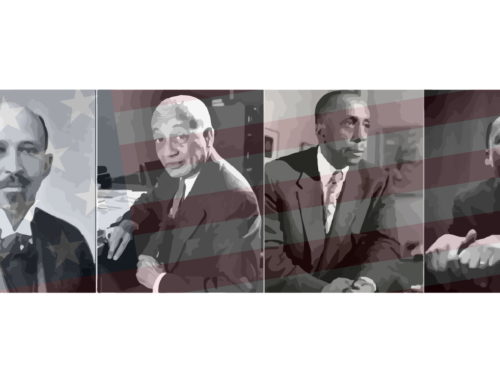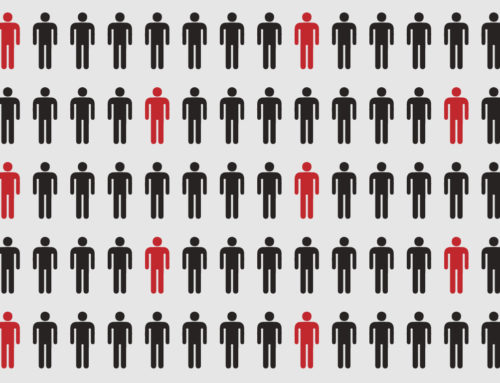By: Glen Paul Hammond
Recently, the American Psychological Association (APA) took aim at “traditional masculinity” by, amongst other things, criticizing “stoicism” as one of its problematic characteristics (APA Guidelines 11). But the essence of stoicism, and our understanding of it, stems from a philosophy that is meant to allow the individual to reach their full potential as a human. What follows, then, is an argument for both the preservation of stoicism and its maintenance in the concept of masculinity.
In its most basic form, rationality or reason is the hallmark of Stoic philosophy. Speaking from this perspective, Epictetus (55-135 AD), the famous Stoic philosopher, described a human being as “a rational animal, subject to death” and so encouraged people to focus on the instrument of reason as a means of distinguishing themselves from the beasts without it. Failure to do so is to let the human inside of you perish. The passions of the unruly beast that Epictetus assigns to sheep, for example, express themselves in such actions that are random, dirty, or inconsiderate; likewise, to the wild beast, he ascribes actions that are combative, mischievous, angry, and rude. In contrast, a human fulfills his potential when these baser elements are transcended, and reason can flourish (Epictetus). Such an accomplishment manifests itself in the virtues of wisdom/prudence, justice/morality, courage/fortitude, self-discipline/temperance.
Since the rational animal that is aware of his own death is also aware of all the vicissitudes that life might hurl at him, this animal must wrestle with the existential question of how to negotiate their life in such a world. Shakespeare examines this in the drama Hamlet and the title character’s fundamental question, “To be or not to be?”. In the famous soliloquy, the suicidal young prince determines that the only sure way to safeguard one’s self from a random universe, which operates with “outrageous fortune,” is to remove one’s self from it (Hamlet 3.1.58). All the “heartache, and the thousand natural shocks that flesh is heir to” can only be quieted, he says, by the point of a dagger (Hamlet 3.1.62). Ultimately, his decision to abstain from killing himself by the end of the soliloquy is not through a desire to live but rather, he says, from a fear of dying. And though the first line of this speech is one of the most recognizable of all the bard’s many great quotations, a much less oft repeated one is the stoic response the title character gives to it in Act Five. To the question, “To be or not to be?” Hamlet later responds, “Let Be” (Hamlet 5.2.225).
The evolution of logic behind Hamlet’s rational thought process is given in the lines that precedes this pivotal two-word response. Hamlet has spent much of the play trying to use his intellect to anticipate life’s events in order to best negotiate them. When his logic does not allow him to do this, he concludes that the universe must operate without logic and, consequently, its randomness must make victims of us all. By play’s end, however, a more mature Hamlet accepts his own limitations and, as Kant would acknowledge, more than a century later, embraces the concept that though man has the capacity to understand much, there are still things that will remain outside his understanding. This allows him to consider the possibility that what he initially perceived as random might actually be a higher order of logic beyond his comprehension. In Act 5, scene two, he says,
Not a whit, we defy augury. There is special providence
in the fall of a sparrow. If it be now, ‘tis not to come; if it
be not to come, it will be now; if it be not now, yet it will come.
The readiness is all. Since no man of aught he leaves knows,
what is’t to leave betimes? Let be. (Hamlet 220-25)
Whether the universe operates through outrageous fortune or under some sort of incomprehensible providence, Hamlet reasons that both are equally inaccessible to him. Consequently, he will abandon all attempts to understand it and defy augury. This realization allows him to accept those things he cannot control and, at the same time, take responsibility for and embrace those things he can control; namely, his reactions to what may come and so, he declares, “The readiness is all” (Hamlet 5.2.224). In this way, the rational animal that is aware of his own demise can avoid sacrificing all of his consciousness to its realization and transcend it, “Since no man of aught he leaves knows, what is’t to leave betimes?” (Hamlet 5.2.224-25). Through this, the pain of life is replaced by an affirmation of life and the existential question, “To live or not to live?” renders the stoic, “Let Live,” as a response.
This philosophical conclusion is mirrored by the code of conduct exhibited in the work of another literary icon: Ernest Hemingway. The Hemingway code, and its modus operandi, is most easily understood through the author’s own description of its physical manifestation: “Grace Under Pressure.” The stoic virtues for Hemingway are epitomized by the dignity that self-control provides to a world inherently void of it. The characteristics of such self-control are self-discipline, knowledge, skill, poise, honesty, courage, persistence and stoic endurance, and they are the necessary ingredients that a man must employ against the vicissitudes of his life if he is to retain both his manhood and his humanity. Much like Hamlet, the Hemingway Code hero accepts what he cannot control and channels his energy to those things that he can control. Since these incomprehensible events must present themselves to individuals as inherently meaningless, meaning itself is to be found in the individual’s response to them. Fully functioning adulthood depends on the acceptance of this, and its realization runs like a thread through all the author’s work.
In the short story Indian Camp, for example, which appears in Hemingway’s collection of short stories, In Our Time, Nick Adams’ father, who is a doctor, takes his young son on one of his medical calls. A native woman is in labor and Nick’s father has brought him along to educate him. This is the planned event. However, a complication arises because the child is a breach. Due to the location of the woman’s labor, inside an Indian Reservation, the doctor lacks the necessary tools to properly perform a Caesarian. For one, there is no anesthetic and so the doctor will have to cut the woman’s stomach open without any means to ease her pain. This is the chaos that confronts Nick’s father and the metaphor for what life might throw at an individual. The key to understanding the story’s deeper meaning, then, is in the doctor’s response to the situation. As Nick begs his father to give the woman something to stop her screaming, he responds, “No. I haven’t any anesthetic. But her screams are not important. I don’t hear them because they are not important” (Indian 92). Had the doctor had the necessary drugs to stop the woman’s pain, and so her screaming, he would have used it, but without the anesthetic her pain must now be categorized as one of those things he cannot control and so he dispassionately disregards it. His job is to deliver the baby and keep both the mother and the child alive. For this, he must focus on what he can control and employ his knowledge and skill to that singular purpose. Yet, even these characteristics are of little use without the poise and stoic endurance to employ them. Hemingway takes some pain to illustrate that with all that is going on the doctor remains calm, pouring out water into a basin, placing his operating tools in it to be boiled, then scrubbing his hands in the hot water with a cake of soap before going on to successfully save the life of both the woman and the child (Indian 92-3).
Like all great works of literature, however, the story is multi-layered, and Hemingway is not content to merely show the virtues of the doctor’s stoicism. Due to a severe injury, the pregnant woman’s husband has been unable to leave the shanty and has been present throughout the entire ordeal. Being aware of the great dangers of childbirth to women at the time, the husband succumbs to his panic and escapes it through the only means available to him; he commits suicide, cutting his own throat from ear to ear. The doctor who had brought his son to witness childbirth did not plan on having his son experience a suicide. The planned event is followed by an unplanned one and so the full fabric of life’s experience—the beginning of it, the end of it, and the pain of it—is played out in the space of a few hours. This, of course, changes Nick; the boy, who entered the story an immature child, lying in his father’s arms, asking questions like, “Where are we going, Daddy?” now leaves the story more mature (Indian 92). He sits by himself in the canoe and the childish questions are replaced by existential ones, “Do many men kill themselves, Daddy…. Is dying hard?” (Indian 95). The larger theme of maturation that the collection of stories In Our Time attempts to illustrate is, in this way, demonstrated, yet, it is a thin veneer covering a far more essential question. The real crux of the matter for Hemingway is not whether a boy will become a man, but rather, and more importantly, what kind of man a boy will become.
In Indian Camp, the same event confronts two people, the doctor and the husband of the woman. The former exhibits Grace Under Pressure and, as Hemingway puts it in another of the collection’s stories, does “the one thing, the only thing for a man to do, easily and naturally, when he might have done something else” (Soldier’s, 146); he rises above the chaos and applies form to it through the virtues he has developed over a lifetime; contrarily, the latter does not exhibit any such self-control and, ultimately, fails to successfully confront life’s event, destroying both himself and the family unit he is responsible for. It is a clinic on the different reactions of two men and so represents the two different forms of masculinity open to the boy.
The APA targets stoicism as a contributing factor to unhealthy behaviors in men. Its list of maladaptive traits lumps together the attributes of competitiveness and stoicism with that of aggression and dominance (Pappas). Of course, any characteristic taken to its extreme may be problematic. Unfettered emotion, for example, can easily lapse into dysfunctional hysteria. Yet, the stoicism that is part of the traditional male repertoire is neither the extreme nor the caricature of emotionlessness that the APA and its adherents would have us believe. It is best embodied in the kinds of literary examples presented above. This, I would argue, is a lesson in behavior worth preserving in not only men and boys but in all individuals. Since no individual knows what trials life may bring, no individual can be sure how he or she will react to them. Stoicism is a preparation for these inevitable and unknowable eventualities, part of an individual’s arsenal for life.
Ironically, the APA relies on what appears to be its own socially constructed theory in the interpretation of their data. According to the guidelines, “Understanding the socially constructed nature of masculinity and how it affects boys and men…is an important cultural competency” (APA Guidelines 6). Most of the current struggles of men, it argues, can be attributed in some way to traditional masculinity. Yet, as Steven Pinker, a professor of psychology at Harvard, points out, the rejection of biological and genetic factors in the APA’s “blank slate” approach severely limits the study (Edsall). In response to an inquiry from The New York Times, Pinker went on to say that the basic premise of the study follows a set of principles that is laid down as incontrovertibly true, when , in fact this is not the case. It is a narrative, that he says, is rooted in folk theory, romanticism, Freudian psychoanalysis, as well as Hollywood, and it goes like this, “repressing emotions is bad and expressing them is good” (Edsall). He goes on to say that this is contradicted by a large body of literature that shows…
people with greater self-control, particularly those who repress anger rather than ‘venting,’ lead healthier lives: they get better grades, have fewer eating disorders, drink less, have fewer psychosomatic aches and pains, are less depressed, anxious, phobic, and paranoid, have higher self-esteem, are more conscientious, have better relationships with their families, have more stable friendships, are less likely to have sex they regretted, are less likely to imagine themselves cheating in a monogamous relationship. (Edsall)
In this vein, David French, writer for the National Review, argues that many of the problems boys face, such as falling behind in school, are not due to an encouragement of traditional masculinity but rather its repression. Schools, he says, “relentlessly suppress boys and sometimes punish boys’ essential nature, from the opening bell to the close of the day” (French). For French “traditional masculinity isn’t the problem; it can be part of the cure”.
Stoicism is an essential tool in the masculine toolbox. As a philosophy, its central teachings serve to remind us of the unpredictability of the world we live in; how brief our life is and how to be steadfast and strong in the face of its vicissitudes; it gives us a philosophical means to control one’s self and embrace the idea that the source of satisfaction lies not in a dependency on our reflexive senses but rather in our propensity for reason and logic (What/Stoicism). It is a philosophy well suited to practical application, and its modern form in the repertoire of traditional masculinity stems from what Pinker calls a “centuries-long change in Western history, starting from the Middle Ages.” This civilized men and changed a macho ideal of manhood, where violent retaliation for an insult gave way to a more reasoned approach that encouraged “the ability to exert self-control, dignity, reserve, and duty” (Edsall). This, according to Pinker, created “the culture of the gentleman, the man of dignity and quiet strength” (Edsall).
Pinker’s historical perspective recalls an example that may surprise many who believe that the defining characteristics of medieval man were barbarity and cruelty. There is a rather touching anecdote about an individual who, throughout the Middle Ages, was considered to be the very model of manhood. William Marshal (c. 1146-1219 AD) was not born great but ended up being both Earl of Pembroke and regent of England. He was at once a courtier, schooled in the gentle art of chivalry, and also a man’s man, considered by his contemporaries to be “the best knight in all the world” (Starkey 120). When King John of England died in 1216, he left a fractured kingdom rent with civil war. On his deathbed, he gave the guardianship of his nine-year-old son, Henry, to Marshal, whom, he said, never acted against him regardless of what he had done (Starkey 119). It was a big thing to ask of a man who was already seventy. The barons of England were in open revolt and a large part of the kingdom had already been conquered by France; yet, he accepted the guardianship. Disregarding his own self-interest, Marshal met the boy who would one day become Henry III but who, at the moment of intercepting him while en route to Gloucester, had not yet been crowned and had nothing of real value to offer. Facing the world’s greatest knight, Henry entrusted himself to his care, saying, “God grant you grace to take good care of us” (Starkey 120). Stepping at once toward the small boy and kneeling in front of him, Marshal gripped the hilt of his sword and promised to protect and serve the future king “in good faith” for as long as he had strength in his bones. As the chroniclers recorded it, all the barons and knights who witnessed this broke down in tears, as did Marshal (Starkey 120).
The above scene exhibits none of the Gender Role Conflict described in the APA guidelines. There is no toxic masculinity present and there is certainly no evidence that these men had an inability to form healthy relationships or that they were either disdainful or incapable of openly expressing emotion. In fact, part of the chivalric code that came out of 12th century Europe directly involved the public expression of emotional vulnerability through courtly love. This same code also included the development of other knightly attributes that became the antecedents of traditional masculinity and, it should be noted, that in the case of the men detailed above, they, led by Marshal, employed these attributes to both secure a kingdom and, through the re-issuing of Magna Carta, lay down the foundation for all the freedoms that our culture currently enjoys.
APA’s intersectional gender lens and those invested in what writers like French have called “an intense culture war focused around men” seem to believe that the ethics of traditional masculinity are synonymous with that of a barbarous Neanderthal. Perhaps that is how they have been socially constructed to view men and, perhaps, that is also its own statement on the masochistic tendencies of our increasingly misandrist culture. When viewed this way, it should come as no surprise that stoicism would incite the ire of a mainstream committed to the activism of a progressively hysterical society or that it should malign an entire sex that aspires to virtues that would promote fortitude and self-reliance in the face of tribulation, confusion and trial. Stoicism must fly in the face of such a zeitgeist of outrage, victimhood and fury. Its very functionality makes the dysfunction of what it exposes all too clear and perhaps this, too, shines a light on guidelines which may, ultimately, say more about those who oppose the aspirations of stoics than those who aspire to them. For as that same young prince once remarked in a drama written centuries ago, “There is nothing either good or bad, but thinking makes it so” (Hamlet 2.2.253-54).
Glen Paul Hammond has a Master of Arts in English Literature from the University of Toronto. His publication credits include the educational book, The Literary Detective, and a forthcoming collection of short stories, entitled, Even the Moon is Frightened of Me, from Political Animal’s sister imprint, Crowsnest Books. Satirical cartoons and more of his writing can be found on his blog, SCRATCH.
Image: William Marshal at a joust unhorses Baldwin Guisnes. (13th century) From the Historia Major of Matthew Paris, Cambridge, Corpus Christi College Library, vol 2, p. 85. MS 16, fol. 88r Scanned from Four Gothic Kings, Elizabeth Hallam, ed. From Wikimedia Commons.
Works Cited
American Psychological Association, Boys and Men Guidelines Group (2018). Guidelines for Psychological Practice with Boys and Men. www.apa.org.
Edsall, Thomas B. “The Fight Over Men is Shaping Our Political Future.” The New York Times, 17 Jan 2019. www.nytimes.com.
Epictetus. “The Discourses of Epictetus including the Enchiridion.” Translated by P.E. Matheson, The Clarendon Press, 1916. Web. Internet Sacred Text Archive. 18 Jan 2019.
French, David. “Grown Men Are the Solution, Not the Problem.” National Review, 7 Jan 2019. www.nationalreview.com.
Hemingway, Ernest. “Indian Camp,” from In Our Time. 1925. The Short Stories. MacMillan Publishing Company.
Hemingway, Ernest. “Soldier’s Home,” from In Our Time. 1925. The Short Stories. MacMillan Publishing Company.
Pappas, Stephanie. “APA issues first-ever guidelines for practice with men and boys.” American Psychological Association, January 2019.
Shakespeare, William. “Hamlet.” Four Great Tragedies. Penguin, 1963.
Starkey, David. Magna Carta. Quercus, 2015.
“What is Stoicism? A Definition & 9 Stoic Exercises to Get You Started.” Daily Stoic. 2019, www.dailystoic.com.










That was a great read, thank you
Thank you, Freddie, for taking the time to read it and for the feedback. Very much appreciated.